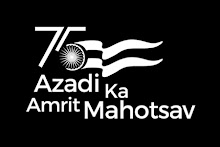That Mithi river has been reduced to a filthy nullah is well-known. However, now a report of the Central Pollution Control Board (CPCB) shows that Maharashtra has the largest number of polluted rivers in the country. The CPCB draws up a list of polluted river stretches in the country on the basis of what it calls “water quality monitoring’’. It has identified 26 such rivers in Maharashtra with 28 polluted stretches. Mula and Mutha in Pune, Kalu and Bhatsa in Thane and Mithi river in Mumbai are among these.
Environmental experts are worried that it is not only industrial pollution, which is responsible for degrading the quality of water in state rivers. The rapid urbanisation across the state is a major culprit as well. “Domestic sewage is a source of pollution besides industrial and other sources,’’ said an official from the Union ministry of environment and forests.So even a river like Kundalika, which flows through the Sahyadris in Raigad, now houses a polluted stretch. Similarly, Nira—a tributary of Bhima in Solapur, and Kanhan, a river flowing through Nagpur have been polluted because of industrial and domestic effluence.
The CPCB has marked 150 polluted river stretches in India, which includes almost all the major rivers. After Maharashtra, Gujarat has the most polluted rivers, showing that industrial activity is a major source of pollution.
The National River Conservation Programme (NRCP) is the nodal central government plan to fight river water pollution. However, it covers only 38 rivers in 20 states. Of these, the clean-up of just four rivers in Maharashtra— Panchganga, Tapi, Krishna and Godavari—is getting funds under NCRP. But CPCB data shows that even small rivers and tributaries in the state are polluted. This means a lot of effort will have to be made by the state and local authorities to clean them up.
Magsaysay Award winner Rajendra Singh, who has revived several dying rivers in Rajasthan, said, “I have seen Mula and Mutha rivers when they were absolutely clean. Today, they only carry industrial discharge. As long as the government allows factories and individuals to keep flouting environmental guidelines, nothing will change.’’ “If rivers are to be saved, pollution abetment schemes must be taken up urgently. These include interception, diversion and treatment of sewage, lowcost sanitation works on river banks as well as electric crematoria,’’ said another expert.
The most polluted rivers in the state are Bhima, Godavari, Mula & Mutha, Pawana, Panchganga, Patalganga, Indrayani, Koyna, Kundalika, Kalu, Kanhan, Kolar, Mithi, Tapi, Girna, Nira, Wainganga, Wardha, Krishna, Purna, Nira, Chandrabhaga, Venna, Ulhas, Rangavali and Bhatsa.
Subscribe to:
Post Comments (Atom)



1 comment:
My village is on the bank of "Panchganga" river. The condition of Panchganga river is due to co-operative sugar mills wastes which are operating (Chairman of sugar mills)by high profile politicians supporters. These chairmans are provide funds to politicians so they ignore the health of local poppulation. Most part of Kolhapur district is suffering from viral hepatitis and other water borne diseases. But politicians and health officials are no relation with public health and their problems. I request to NGOs and media to show the problems to politicians for open their eyes.
Local public is requesting to politicians and officials but these peoples are shameless they not doing anything.
Post a Comment